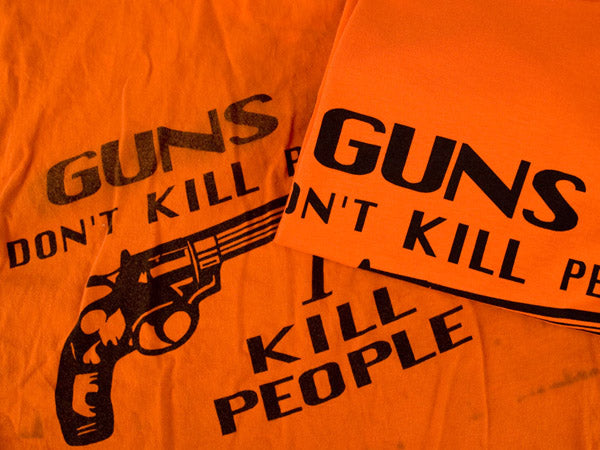Aging T-Shirts In Six Easy Steps: Vinegar & Tea Soak (Part 7)

Materials: Lemon juice, Salt, Measuring Cup(s), Vinegar, Bucket(s), Stainer (Tea, Coffee, Paint, Dirt, etc.)
Method: 1. Wash and dry shirts one to three times, in advance, if possible (optional). See our previous installment on Salt & Washing Soda for easy reference.
2. To further fade brights, make a solution of 1 part lemon juice to 3 parts water and soak the t-shirt(s) for anywhere between 3 and 12 hours. Line dry if possible.
3. When dry, soak the t-shirt in a solution of sea salt (which acts here as an abrasive) and water, ideally at a 1 to 9 ratio, for a minimum of 48 to 72 hours.
You can't hit my fastball.
4. Line dry.
5. Steep your shirt(s) in a large bowl, pan, or bucket. Add staining agents and stir vigorously to achieve an even distribution. This will take anywhere between 20 minutes and 72 hours, depending on the color of the tee and the amount of staining agent used (you’ll need to keep a close eye on the solution). Pull and line dry.

Tea Bags = Win!
Redux:

6. When the shirts are dry, soak again in a solution of vinegar and water (ideally, at a 1 to 3 ratio) for 4 to 12 hours (or longer if you prefer). The vinegar will help set the stain in the fabric.
This shirt has tiger blood for ink.
7. Wash and dry on normal.
8. Apply the sandpaper technique as needed.
Tea staining gives tees a dingy, vintage quality.
A fastball that’s over the middle of the plate:
Balls (right) and strikes (left).
Results & Conclusions: One wonders just how effective or necessary the early steps outlined above are, but steeping your tees in teas will lend them a vintage, worn-in quality. As with bleaching, described in part two of our project, it is tricky to control the application with any certainty. Note the change in the Wild Thing design above, which soaked for 12 hours and clearly took on a distressed state.
Bonus points: this technique can be paired with Acetone for a tandem approach (as it was above).
Based on the early success of the Wild Thing sample, we expanded this experiment to include two other shirts, Guns Don’t Kill and Wake Me When It’s Quitting Time. We extended the duration of the soak to roughly 48 hours expecting a stronger, more pronounced effect, but the results were unexpectedly mixed.
The orange hues don’t render all that different here in picture form. The shirt on the left, treated, has lost a bit of its luster, but the discrepancy is minor and almost imperceptible here in picture form. It did have something of a splotchy complexion but unfortunately, that didn’t register on camera. Note that we did treat the first bit of text, “Guns,” with acetone prior to dumping it in the tea soak.
In the crosshairs:
We had better success with our second selection. Note the much deeper shade of yellow on the left.
Closer:
As with Guns, one element of the top line, in this case the “W,” was treated with Acetone. If we were to revisit this experiment, we would treat the entire slogan so as to fill out the effect. However faint, there was also an uneven quality to the discoloration, as there was with Guns, an effect that lends the shirt a tired, worn-in quality.
Next: Conclusion!








